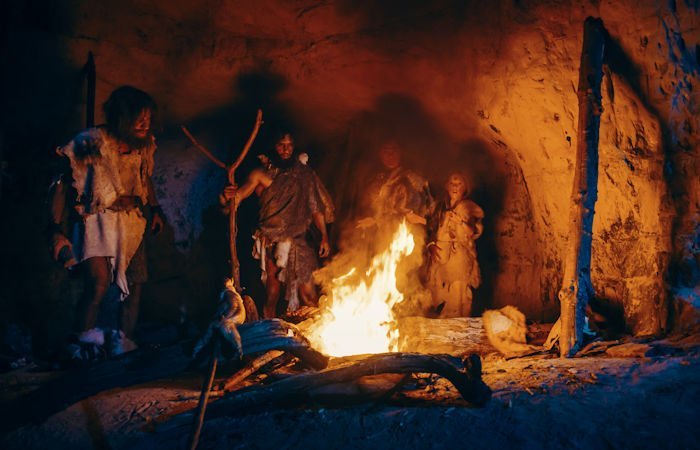Evidence Of Extensive Human Fire Use 50,000 Years Ago

Conny Waters – AncientPages.com – Fire, an ancient natural phenomenon, has played a key role in shaping our planet for over 400 million years.
It can transform habitats, impact the carbon cycle, and is closely connected to shifts in climate and vegetation.
Credit: Adobe Stock – Gorodenkoff
With the advent of human civilization, fire evolved from being solely a natural force to one that could be deliberately harnessed for specific purposes. Nevertheless, the precise timeline of when humans began extensively employing fire to regulate their lives and significantly influence its occurrences remains uncertain.
To address this inquiry, researchers from the Institute of Oceanology of the Chinese Academy of Sciences (IOCAS), in collaboration with colleagues from China, Germany, and France, conducted an analysis of the pyrogenic carbon record within a 300,000-year-old sediment core extracted from the East China Sea.
Dr. ZHAO Debo, the study’s corresponding author, said the findings challenge the widely held belief that humans only began influencing the environment with fire in the recent past, during the Holocene.
A study published in the Proceedings of the National Academy of Sciences (PNAS) examines the occurrence of charred plant remains, referred to as pyrogenic carbon. These remains are created when vegetation burns but is not entirely consumed by fire.
In their study, researchers found a significant increase in fire activity across East Asia approximately 50,000 years ago.
This finding is consistent with previous reports indicating increased fire activities in Europe, Southeast Asia, and the Papua New Guinea–Australia region. It suggests a continental-scale intensification of fire use during this period.
Paleoanthropologists who support the theory of evolution propose that the common ancestors of all contemporary humans originated in Africa approximately 300,000 years ago, with Homo sapiens first appearing during this era. It is posited that between 70,000 and 50,000 years ago, Homo sapiens migrated from Africa to regions such as Europe, Asia, Southeast Asia, and Australia. This migration ultimately led to the replacement of local ancient human populations.
The study emphasizes that the global increase in fire use coincides with the rapid expansion of Homo sapiens, higher population densities, and a growing dependence on fire, particularly during cold, glacial periods.
During this period, fire played a crucial role in human development. It enabled more efficient cooking, which improved nutrient absorption from food. Additionally, fire offered protection against predators and helped humans endure extreme climates. This dependence on fire had a significant influence on cultural advancements and technological innovations. Furthermore, it had a notable impact on natural systems, particularly affecting the carbon cycle.
It is likely that humans began influencing ecosystems and the global carbon cycle through the use of fire before the Last Ice Age. Professor WAN Shiming, another corresponding author, noted that “even during the Last Glaciation, the use of fire had likely begun to alter ecosystems and carbon fluxes.”
These conclusions significantly impact understanding Earth’s sensitivity to human impacts. If ancient fire management changed atmospheric carbon levels, current climate models might underestimate the historical baseline of human–environment interactions.
Written by Conny Waters – AncientPages.com Staff Writer





